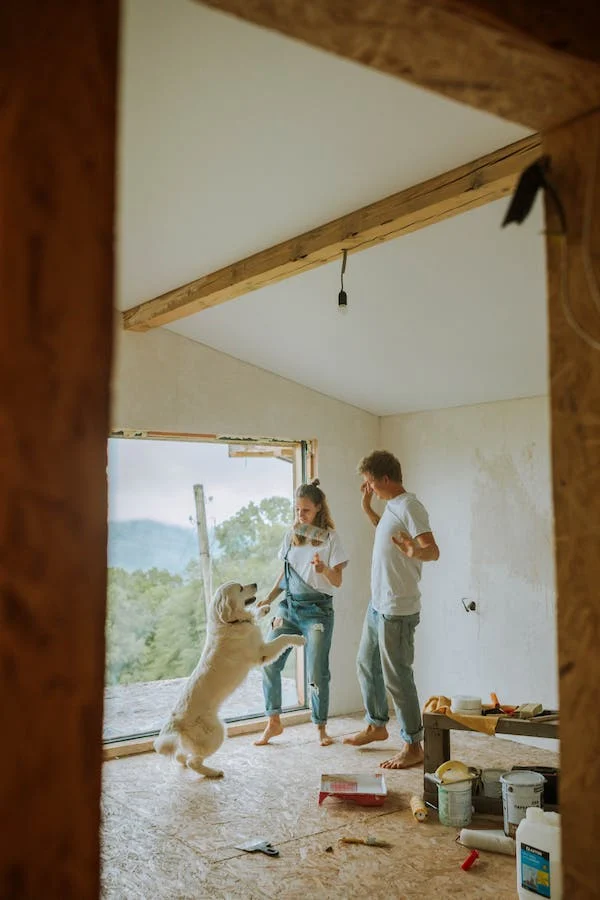10 HOUSE PAINTING TIPS YOU MUST KNOW BEFORE YOU MOVE IN

Moving into a new home is one of the most exciting things you can do. Who doesn’t like the scent of freshly painted walls? There are many things to remember and know when you’re painting your home. These are the top house painting tips that will keep you in the know!
Of Prime Importance: Primers
Before you start painting, clean the walls thoroughly. This will allow the paint to stick to the surface. Primer is essential as it forms the base for paint. There are many primers available for exteriors and interiors. Make sure you choose the right one. To provide protection and ensure a smooth finish, you should apply at least two coats to your walls. The more durable and well-finished your painting will look, the better the primer.
Get The Shades
It’s better to test the paint on a few samples before you buy a gallon. You can do patch tests on different rooms and test out different combinations before you make a decision. To see how different light effects the paint’s appearance, you can paint a piece from foam board and then move it around on the walls. Before you decide on the final colour, think, experiment, and procrastinate as much as you like.
Mix Largely
Mix the colours in larger quantities once they have been purchased to ensure uniformity throughout your room. Mixing colours in smaller amounts can lead to inconsistent results on walls. Mix all the paints for one color at once to avoid mixing and maintain a uniform look in the room.
Brushes Or Rollers?
We recommend that you use both a roller and a brush for house painting in lower hutt. You will need to use rollers on the larger surfaces and brushes for smaller areas. Rollers are more efficient for interior work as they provide a smoother finish and can cover more surfaces at once. Rollers can also be used by professionals and amateurs alike so that you don’t have to worry about their skills. Tape should be used to cover areas that you do not want painting. It can also be used to draw lines around corners and edges. Once the paint has dried, it can be removed for a perfect look.
Protection Cover
- Protect anything you don’t wish to paint. You must cover the floors well to protect your flooring from paint splatters.
- Cover all decor and furniture with a secure cover so that paint doesn’t get on it. To provide better protection and allow workers to paint the walls, you can group any furniture or decor items in one room.
- Do not overlook the small things that can look ugly if they are painted. Make sure to cover door knobs and switch boards, as well as light fittings and wood work.
Know Your Paints
- There are a wide variety of paint options available today. It is important to select the right paint for your walls.
- Learn the differences between oil paints, latex paints, and water-based paints. Consult with experts to determine which type is best for your walls and within your budget.
- Mixing and matching colours in the same room is a good idea. There shouldn’t be too many variations between the finishes on adjacent walls.
- While one accent wall may have a different texture, the others should all have the same finish, even though the colours might be different.
Plan Ahead
Do not rush to paint your home or begin the project without planning. Before you decide when to paint your house, there are a few things you should consider. You need to understand the weather conditions in your area and determine the best time of year for it to dry without rain or lower humidity. Your exterior as well as interior paints must be dried for the best results. Without this, it won’t last long. Paint is most vulnerable to dampness and humidity.
Let It Dry
For a durable finish, paint must dry properly. Paints should dry for at least 24 hours between coats. Allow the paint to dry for at least two days before you begin decorating the room. The paint will be stronger and firmer the faster it dries. It may take patience to let the paint dry, but the end result is well worth it.
Stored
After 15 days, do not wash or wipe newly painted surfaces. Keep small amounts of paint in small containers or jars for touch-ups if necessary. You should label them so you can easily identify which paint is which in case of a need for touch-ups. Your personal paint brushes and rollers should be cleaned with solvents and thinners before being wrapped in wax paper or plastic for storage. To preserve the shape of your paint brushes, hang them upside-down.
Maintenance Is Key
- It is important to remember that a house painting job is done well does not mean the end. To make the paint last longer, you must maintain it well.
- You should clean the painted surfaces with mild soap and water once in a while to prevent stains, dust, and grime from settling in deep.
- Use a soft sponge or cloth to clean instead of rubbing your skin.
- You should inspect your walls periodically for any signs of flaking, cracking, or damp.
- Call an expert immediately if you spot any problems. Neglecting to act quickly or in the right way can cause permanent damage to your home.




Leave a Reply